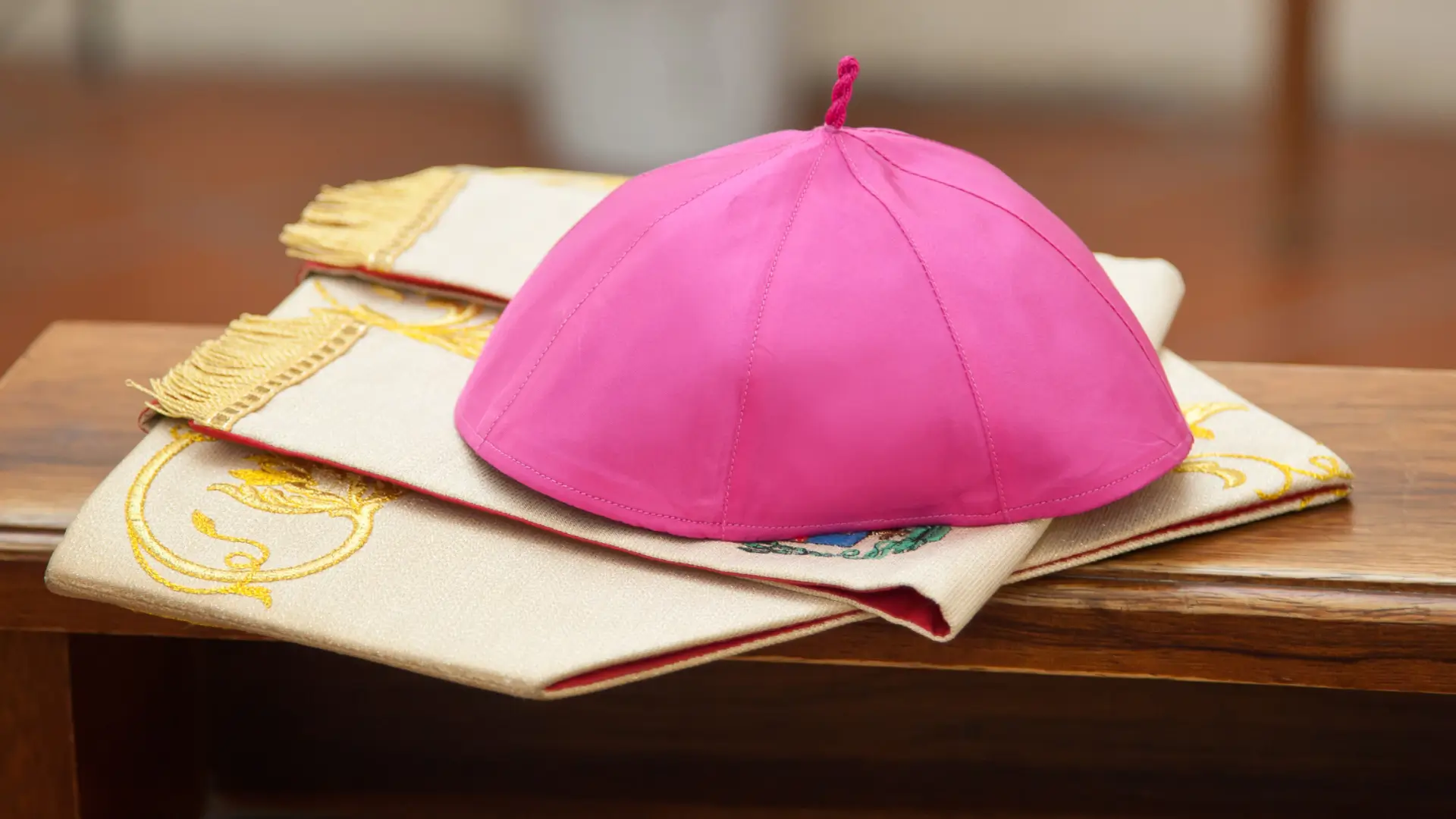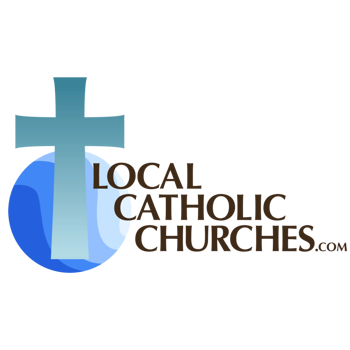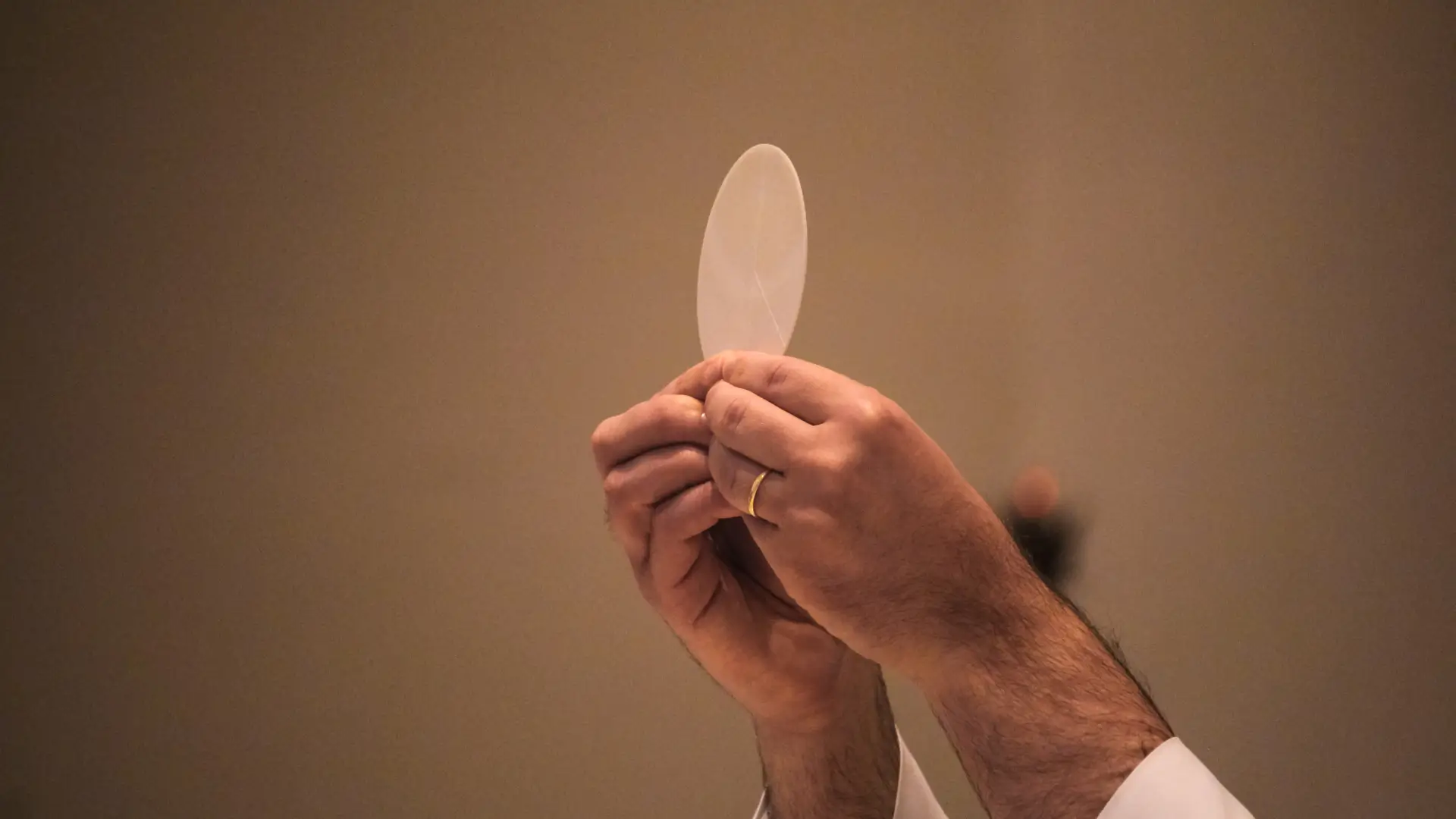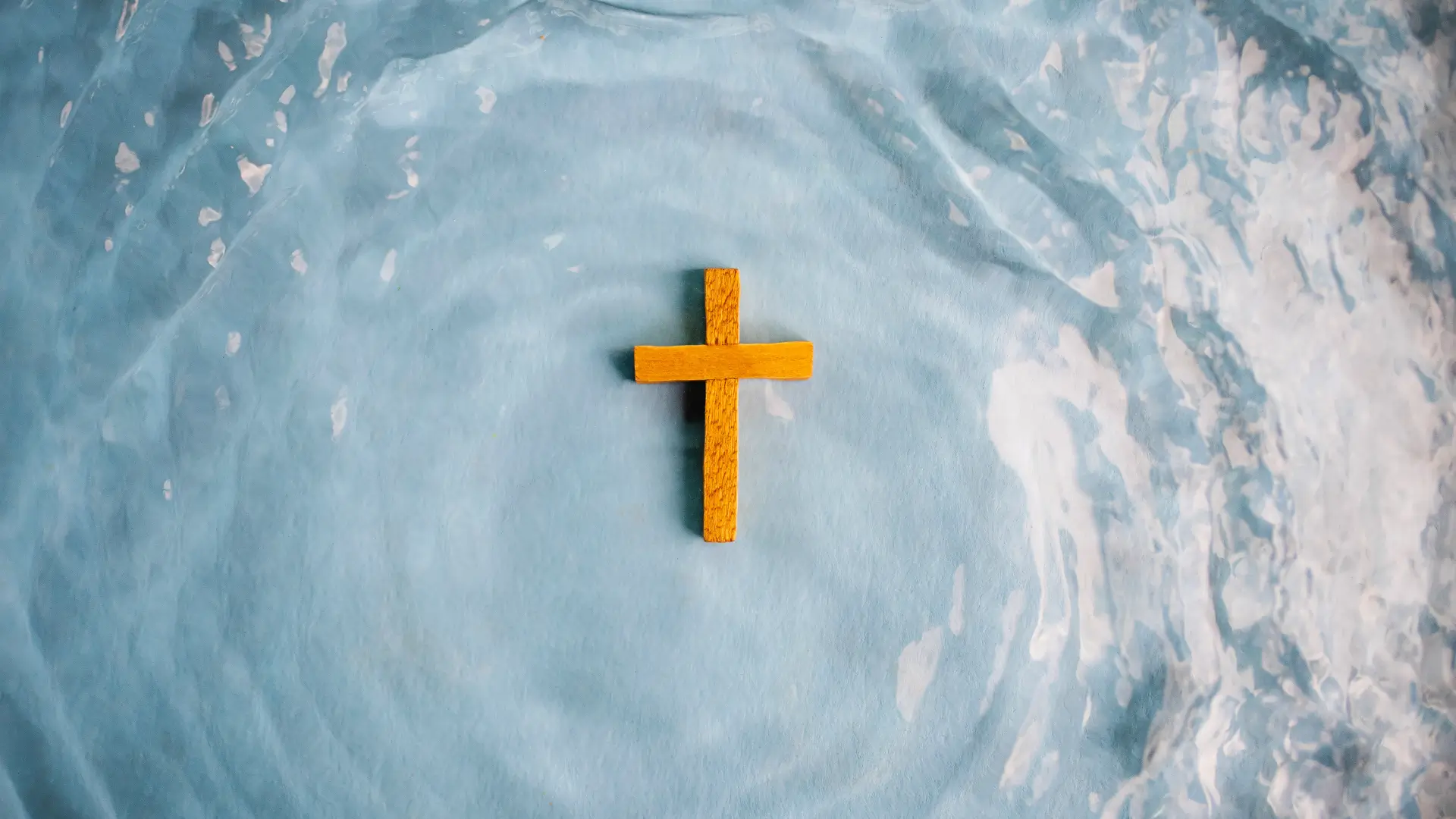Holy Orders is one of the seven sacraments in the Catholic Church, playing a pivotal role in maintaining the Church’s hierarchical structure and ensuring the continuity of its mission. This sacrament is not merely a ceremonial rite but a profound spiritual commitment that confers a special grace upon those who are ordained. In this article, we will explore the depths of Holy Orders, examining its theological foundations, the sacramental process, historical evolution, roles within the Church, and contemporary perspectives. Additionally, we will integrate relevant Bible quotes to enrich our understanding and include a table to elucidate the different degrees of Holy Orders.
Introduction to Holy Orders
Holy Orders is the sacrament through which the Church ordains individuals to serve in various clerical roles, namely deacon, priest, and bishop. These ordained ministers are entrusted with the pastoral care of the faithful, the administration of sacraments, and the leadership of the Church community. The sacrament of Holy Orders is rooted in the belief that Christ Himself instituted this sacrament to ensure the continuity of His mission on earth.
Theological Foundation
At the heart of Holy Orders is the belief in apostolic succession—the unbroken line of bishops dating back to the apostles chosen by Christ. This succession is essential for maintaining the integrity and authority of the Church. The sacrament imparts a permanent character, meaning once conferred, it cannot be repeated or revoked. This indelible mark signifies a lifelong commitment to service and leadership within the Church.
Biblical Foundation:
- Acts 6:6: “They set about to choose seven men from among them, men who were known to be full of the Spirit and wisdom. This proposal pleased the whole group, and they chose Stephen, Philip, Procorus, Nicanor, Timon, Parmenas, and Nicolas from Antioch.”
This passage highlights the early Church’s practice of selecting deacons, illustrating the biblical roots of Holy Orders. - 1 Timothy 3:1-13: Outlines the qualifications for bishops and deacons, reinforcing the scriptural basis for ecclesiastical roles.
The Sacramental Process of Holy Orders
Holy Orders is conferred in three distinct degrees: deacon, priest, and bishop. Each level builds upon the previous one, granting specific roles and responsibilities. The following table summarizes these degrees along with their biblical references and primary functions:
| Degree | Biblical References | Primary Functions |
|---|---|---|
| Deacon | Acts 6:1-6; 1 Timothy 3:8-13 | Assist in liturgical services, preach, perform acts of charity, administer baptisms, and support priests and bishops. |
| Priest | John 20:21-23; 1 Corinthians 12:28 | Celebrate the Eucharist, hear confessions, provide spiritual guidance, lead parishes, and administer sacraments such as baptism and marriage. |
| Bishop | Acts 1:20-26; Titus 1:5-9 | Oversee dioceses, ordain deacons and priests, ensure doctrinal purity, govern Church administration, and engage in ecumenical and interfaith dialogue. |
1. The Diaconate
The diaconate is the first level of Holy Orders. Deacons serve the Church in various capacities, including assisting in liturgical services, preaching, and performing acts of charity. There are two types of deacons:
- Transitional Deacons: Seminarians preparing for the priesthood undergo a period as deacons.
- Permanent Deacons: Individuals who are ordained to serve as deacons permanently, often while maintaining secular careers.
The role of the deacon is foundational, emphasizing service and charity, reflecting Christ’s own example of servant leadership.
Biblical Foundation:
- Philippians 1:1: “Paul and Timothy, servants of Christ Jesus, To all God’s holy people in Christ Jesus at Philippi, together with the overseers and deacons.”
This greeting by Paul acknowledges the role of deacons in the early Church.
2. The Priesthood
Priests are ordained to celebrate the Eucharist, hear confessions, and provide spiritual guidance to the faithful. The priesthood involves a deeper level of sacramental responsibility compared to the diaconate. Priests act in the person of Christ (in persona Christi), especially during the celebration of the sacraments. They are responsible for leading parishes, administering sacraments, and shepherding their congregations.
Biblical Foundation:
- John 20:21-23: “Again Jesus said, ‘Peace be with you! As the Father has sent me, I am sending you.’ And with that he breathed on them and said, ‘Receive the Holy Spirit. If you forgive anyone’s sins, their sins are forgiven; if you do not forgive them, they are not forgiven.'”
This passage underscores the priest’s authority to forgive sins, a key aspect of their sacramental role.
3. The Episcopate
Bishops hold the highest level of Holy Orders. They are the successors of the apostles, entrusted with the oversight of dioceses, which are regional church jurisdictions. Bishops have the authority to ordain deacons, priests, and other bishops. They ensure doctrinal purity, govern the Church’s administrative matters, and provide pastoral care on a larger scale.
Biblical Foundation:
- Acts 1:20-26: Describes the selection of Matthias to replace Judas Iscariot, highlighting the early Church’s practice of appointing leaders with apostolic authority.
- Titus 1:5-9: Paul instructs Titus to appoint elders (bishops) in every town, outlining the qualifications necessary for episcopal roles.
Historical Evolution of Holy Orders
The sacrament of Holy Orders has evolved significantly since the early days of the Church. Understanding this historical context provides insight into its current practice and significance.
Early Church
In the early Christian communities, leaders emerged organically, often from among the believers who demonstrated spiritual gifts and leadership qualities. The Apostolic Fathers, such as St. Ignatius of Antioch, emphasized the importance of maintaining unity through a clear hierarchical structure.
Biblical Reference:
- 1 Timothy 4:14: “Do not neglect your gift, which was given you through prophecy when the body of elders laid their hands on you.”
This indicates the early practice of ordination and the laying on of hands to confer authority.
Medieval Period
During the medieval era, the Church’s hierarchy became more formalized. The roles of bishop, priest, and deacon were clearly delineated, and the sacrament of Holy Orders was central to maintaining ecclesiastical authority. The Great Schism and the Investiture Controversy highlighted the political and spiritual importance of episcopal authority.
Reformation and Counter-Reformation
The Protestant Reformation challenged the sacramental and hierarchical structures of the Catholic Church. In response, the Council of Trent (1545-1563) reaffirmed the validity and necessity of Holy Orders, emphasizing the sacrament’s role in preserving Church unity and doctrine.
Biblical Reference:
- Hebrews 5:1-4: Discusses the role of high priests, reinforcing the concept of ordained leaders within a religious community.
Modern Era
In the modern era, the Second Vatican Council (1962-1965) brought significant reforms to the sacrament of Holy Orders. The Council emphasized the role of the laity, promoted ecumenism, and encouraged a more collegial approach to Church leadership. Despite these changes, the fundamental nature of Holy Orders as a sacramental ordination remained intact.
Roles and Responsibilities within Holy Orders
Each level of Holy Orders entails specific duties and responsibilities that contribute to the life and mission of the Church.
Deacons
- Liturgical Roles: Assisting in Mass, proclaiming the Gospel, and performing baptisms.
- Charitable Works: Engaging in social justice initiatives, caring for the poor, and administering charitable organizations.
- Pastoral Care: Visiting the sick, supporting parishioners, and facilitating community activities.
Biblical Reference:
- 1 Corinthians 12:28: “And God has placed in the church first of all apostles, second prophets, third teachers, then miracles, then gifts of healing, of helping, of guidance, and of different kinds of tongues.”
This passage illustrates the various roles within the Church, including those akin to deacons.
Priests
- Celebration of Sacraments: Presiding over the Eucharist, hearing confessions, performing baptisms, marriages, and anointing the sick.
- Pastoral Leadership: Leading parish communities, providing spiritual guidance, and fostering faith development.
- Teaching and Preaching: Educating the faithful through homilies, catechesis, and community outreach programs.
Biblical Reference:
- Acts 6:4: “But we will give ourselves continually to prayer, and to the ministry of the word.”
Highlighting the priest’s role in preaching and teaching the Word of God.
Bishops
- Governance: Overseeing diocesan administration, ensuring adherence to Church laws, and managing Church property.
- Ordination: Conferring Holy Orders to deacons, priests, and bishops, thus continuing apostolic succession.
- Ecumenical and Interfaith Relations: Engaging in dialogue with other Christian denominations and faith traditions to promote unity and understanding.
Biblical Reference:
- Ephesians 4:11-12: “And he gave the apostles, the prophets, the evangelists, the shepherds and teachers, to equip the saints for the work of ministry, for building up the body of Christ.”
This underscores the role of bishops in equipping and leading the Church.
Canonical Age Requirements
The Code of Canon Law provides specific guidelines regarding the minimum age for each degree of Holy Orders. These requirements ensure that candidates possess the maturity and life experience necessary to fulfill their pastoral and administrative responsibilities effectively.
Minimum Age for Holy Orders
| Degree of Holy Orders | Minimum Age |
|---|---|
| Deacon | 25 years |
| Priest | 25 years |
| Bishop | 35 years |
- Deacon: Both permanent deacons and those in transitional deaconship (preparing for the priesthood) must be at least 25 years old. This age requirement ensures that candidates have attained a level of personal and spiritual maturity suitable for their service.
- Priest: The minimum age for ordination to the priesthood is also 25 years. This allows candidates to complete their theological education and pastoral training adequately.
- Bishop: Individuals ordained as bishops must be at least 35 years old. This higher age requirement reflects the greater responsibilities and leadership roles that bishops assume within the Church hierarchy.
Maximum Age for Holy Orders
Interestingly, the Code of Canon Law does not specify a maximum age for Holy Orders. This means that there is no upper age limit for individuals seeking ordination. However, practical considerations often influence the age at which individuals are ordained:
- Health and Vigor: Ordained ministers are expected to undertake demanding pastoral and administrative duties. Therefore, health and physical capability can be practical factors affecting ordination at an advanced age.
- Church Needs: The local diocese may consider the needs of the Church community when evaluating candidates, potentially favoring younger candidates who can serve for many years.
- Personal Vocation: Individuals discerning their vocation later in life may bring valuable life experiences and wisdom to their ministry, which can be advantageous in certain pastoral settings.
Theological Significance of Holy Orders
Holy Orders is not merely a functional role within the Church but a profound theological reality that embodies the Church’s mission and identity.
Continuity of Christ’s Mission
Through Holy Orders, the Church maintains continuity with Christ’s mission. The ordained ministers act as Christ’s representatives, particularly in the sacraments, ensuring that divine grace is imparted to the faithful.
Biblical Reference:
- Matthew 16:18-19: “And I tell you that you are Peter, and on this rock I will build my church, and the gates of Hades will not overcome it. I will give you the keys of the kingdom of heaven; whatever you bind on earth will be bound in heaven, and whatever you loose on earth will be loosed in heaven.”
This passage signifies the authority given to the Church’s leaders, underpinning the theological foundation of Holy Orders.
Community and Communion
Holy Orders fosters a sense of community and communion within the Church. The hierarchical structure ensures that teachings and traditions are preserved and transmitted accurately, promoting unity and cohesion among believers.
Sanctification and Service
The sacrament of Holy Orders is a means of sanctification for the ordained. It calls them to a life of service, embodying Christ’s call to love, humility, and sacrifice. This sanctification empowers them to guide and nurture the spiritual lives of the faithful.
The Ordination Rite
The rite of ordination is rich in symbolism and ritual, reflecting the sacred nature of Holy Orders. While specific practices may vary slightly across different rites within the Catholic Church, the core elements remain consistent.
Laying on of Hands
One of the most significant elements of the ordination rite is the laying on of hands. This gesture symbolizes the transmission of the Holy Spirit and the conferment of the sacrament. It echoes the practices of the apostles and signifies the continuity of apostolic authority.
Biblical Reference:
- Acts 8:17: “Then Peter and John placed their hands on them, and they received the Holy Spirit.”
This event exemplifies the early Church’s practice of ordaining through the laying on of hands.
Anointing with Sacred Chrism
During ordination, the candidate is anointed with sacred chrism oil. This anointing signifies the sealing of the Holy Spirit and the conferment of grace essential for the ordained ministry.
Biblical Reference:
- Exodus 30:29: “Take the anointing oil and anoint him there by the door of the tabernacle.”
This Old Testament reference underscores the significance of anointing in consecrating leaders.
Vesting and Symbols
The candidate is vested in specific liturgical garments appropriate to their level of ordination. These garments symbolize the dignity and responsibilities of the ordained role. Additional symbols, such as the stole and ring, further denote the authority and commitment of the ordained individual.
Prayers and Liturgy
The ordination ceremony includes specific prayers and liturgical actions that invoke God’s blessing and guidance upon the new deacon, priest, or bishop. These prayers affirm the sacred nature of the sacrament and the community’s support for the ordained individual.
Vocational Discernment and Formation
The journey to Holy Orders involves rigorous discernment and extensive formation to ensure that candidates are prepared for the demands of ordained ministry.
Vocational Discernment
Vocational discernment is a process by which individuals seek to understand and confirm their call to ordained ministry. This involves prayer, reflection, guidance from spiritual directors, and discernment of personal gifts and motivations.
Educational Formation
Candidates undergo extensive theological education, typically at seminaries, where they study Scripture, theology, canon law, pastoral care, and liturgy. This academic preparation equips them with the knowledge necessary to fulfill their roles effectively.
Spiritual Formation
Spiritual formation is integral to preparing for Holy Orders. Candidates engage in regular prayer, spiritual retreats, and mentorship to cultivate their relationship with God and develop the virtues required for ministry.
Pastoral Training
Practical pastoral training involves internships or assignments in parishes, hospitals, or other community settings. This hands-on experience allows candidates to apply their education and spiritual formation in real-world contexts.
The Role of Holy Orders in Church Governance
Holy Orders is essential for the governance and administration of the Catholic Church. The hierarchical structure, composed of deacons, priests, and bishops, ensures that the Church operates cohesively and effectively.
Centralized Authority
The episcopal hierarchy, led by bishops and ultimately the Pope, provides centralized authority for decision-making and doctrinal matters. This structure helps maintain doctrinal unity and resolve conflicts within the Church.
Delegated Responsibilities
Deacons and priests are delegated specific responsibilities within their parishes or ministries. This delegation allows for efficient administration and ensures that the needs of the faithful are met at various levels.
Synodal Structures
Bishops collaborate through synods and councils to address broader issues affecting the Church. This collegial approach fosters dialogue, mutual support, and collective decision-making.
Biblical Reference:
- Acts 15:6: “The apostles and elders met to consider the matter.”
This passage illustrates the early practice of Church leaders convening to make important decisions collectively.
Challenges and Contemporary Issues
Holy Orders faces various challenges in the contemporary world, reflecting broader societal changes and internal Church dynamics.
Vocational Shortages
Many dioceses worldwide experience shortages of priests and deacons, leading to increased workloads for existing clergy and difficulties in ministering to large congregations.
Clericalism and Abuse Scandals
Clericalism—the undue emphasis on the authority and status of the clergy—has been a significant issue, compounded by abuse scandals that have eroded trust in the Church’s leadership. Addressing these issues requires transparency, accountability, and a commitment to reform.
Gender and Sexuality
The Catholic Church’s stance on issues related to gender and sexuality has been a topic of intense debate. Discussions around the ordination of women and the Church’s teachings on homosexuality continue to challenge traditional understandings of Holy Orders.
Ecumenism and Interfaith Dialogue
In an increasingly pluralistic world, Holy Orders must navigate relationships with other Christian denominations and faith traditions. Promoting unity while maintaining doctrinal integrity poses both opportunities and challenges.
Adaptation to Modern Society
The Church faces the task of adapting its ministry to contemporary societal contexts. This includes embracing new technologies, addressing social justice issues, and engaging younger generations in the faith.
Holy Orders and Ecumenism
Holy Orders plays a crucial role in ecumenical dialogue, fostering relationships with other Christian denominations and faith communities.
Common Ground
Recognizing the shared sacramental theology and apostolic heritage, many ecumenical efforts focus on common ground in sacramental practices, ecclesial structures, and theological foundations.
Challenges to Unity
Despite commonalities, significant theological and doctrinal differences, particularly concerning the nature of Holy Orders, pose challenges to achieving full ecclesial unity. Issues such as apostolic succession, the role of women, and celibacy requirements remain contentious.
Steps Towards Reconciliation
Dialogue and mutual recognition efforts aim to bridge gaps and promote understanding. Initiatives like the Joint Declaration on the Doctrine of Justification exemplify progress, while ongoing conversations seek to address divisions related to Holy Orders.
Biblical Reference:
- John 17:21: “That all of them may be one, Father, just as you are in me and I am in you. May they also be in us so that the world may believe that you have sent me.”
This prayer of Jesus underscores the importance of unity among believers, a goal that ecumenical dialogue strives to achieve.
Holy Orders in the Global Context
The sacrament of Holy Orders operates within diverse cultural and societal contexts, reflecting the global nature of the Catholic Church.
Cultural Expressions
Holy Orders is celebrated and expressed differently across cultures, incorporating local traditions and customs into the liturgical rites while maintaining core sacramental elements.
Missionary Work
Ordained ministers play a vital role in missionary efforts, spreading the Gospel and serving communities worldwide. This missionary aspect underscores the universal mission of the Church.
Social and Political Engagement
Bishops and priests often engage in social and political issues, advocating for justice, peace, and the common good. Their ordained status provides a platform for influential leadership in societal matters.
Biblical Reference:
- Micah 6:8: “He has shown you, O mortal, what is good. And what does the Lord require of you? To act justly and to love mercy and to walk humbly with your God.”
This verse inspires clergy to engage in social justice and advocacy as part of their ministry.
Conclusion
Holy Orders is a foundational sacrament in the Catholic Church, integral to its mission, governance, and spiritual life. Through the ordination of deacons, priests, and bishops, the Church ensures the continuity of its apostolic mission and the effective administration of sacraments. The sacrament’s rich theological, historical, and pastoral dimensions underscore its significance and the profound commitment required of those who receive it.
In navigating contemporary challenges, Holy Orders remains a dynamic and vital sacrament, adapting to the needs of the Church and the broader world while steadfastly preserving its sacred traditions. As the Church continues to evolve, the sacrament of Holy Orders will undoubtedly remain central to its identity and mission, fostering leaders who embody Christ’s love, service, and guidance.
References
- Catechism of the Catholic Church – Provides comprehensive teachings on Holy Orders and other sacraments.
- Second Vatican Council Documents – Offers insights into the reforms and contemporary understanding of Holy Orders.
- Council of Trent – Historical documents affirming the sacramental nature of Holy Orders.
- Papal Encyclicals and Apostolic Letters – Various documents addressing the role and challenges of Holy Orders in the modern Church.
- The Bible – Scriptural foundations for the sacrament, particularly passages from the Acts of the Apostles and the Epistles.






